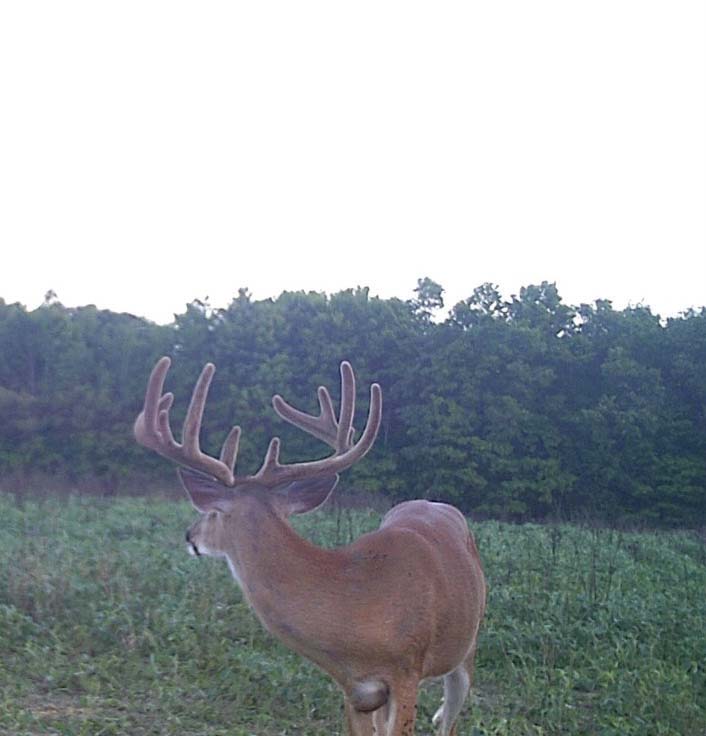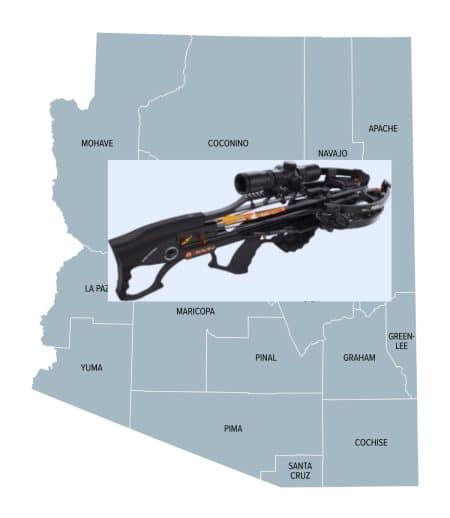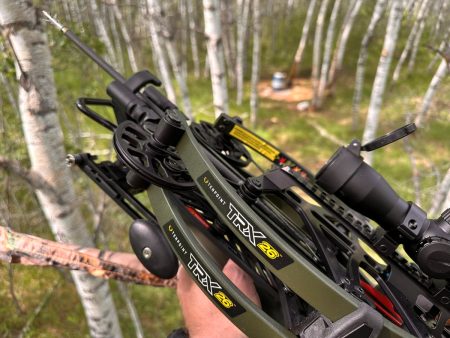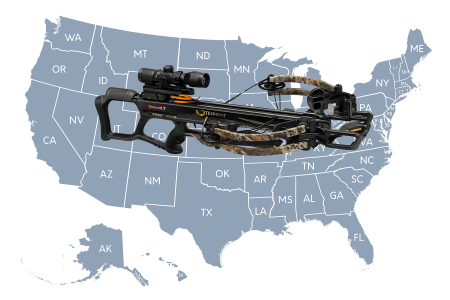Even though crossbow hunting is more popular than ever, it’s easy to put it on the back burner this time of the year. After all, when one invokes thoughts of July – typically they involve vacations, family gatherings, and general fun in the sun. However, July is one of those pivotal months for the serious whitetail hunt- er and can be a great time of the year to regain your commitment and focus on the upcoming bow season. Before you know it, it will be October and the archery season will be upon us.
Every year a discernible pattern occurs with many bowhunters across the country as the fall opener approaches. It’s usually quite predictable and goes something like this. As the dog days of summer start dwindling, rumors and trail camera pictures start to circulate of big bucks. When September arrives, bowhunters begin to realize that they’re down to days before the opener, not months. Suddenly there’s an influx of human intrusion into the whitetails’ world as scouting and stand hanging reach a fever pitch. Anticipation as the bow opener dawns is very high. A few therapeutic hours spent in the deer stand on opening day produce no deer, or only a few doe and smaller bucks that pass by out of range. No worries. It’s only the first day, and the season is long.
As the season progresses, you try to incorporate some stand time in between work and domestic obligations. By the second week of the season, you’re starting to feel a little tired from the juggling act. The deer aren’t cooperating with your best-laid plans, but you keep plugging away hoping for the best. By the third week of the season pictures from your friends, coworkers and the internet reveal that some pretty nice deer are being killed both locally and around the country. Now doubt starts to creep into your mind, and you begin to question your stand locations. Obviously, some in-season scouting is in order so you start traversing your hunting area; in turn, this alerts every deer in the area of your presence. You start out with a predator’s mentality, but soon it wanes and you’re basically just walking around the woods carrying your bow.
During your exodus, you discover what you’re looking for. Hot sign! You now begin to devise a plan of attack so, at the next available opportunity, you’ll move your stand to cover this new find. The fourth week brings renewed invigoration, and you plan an all-day sit as Halloween approaches. But to your dismay, the hot sign you were so enthusiastic about has gone completely cold. As the best part of the season arrives, you’re dejected, tired, and ready to throw in the towel. Sound familiar? I hope not, but this scenario plays out annually. It’s not a good strategy for consistently killing bucks.
I often get asked the question “When is the best time to start focusing on the upcoming season?” My standard answer is: “What are you doing right now?” That will typically bring about a quizzical look, but there’s literally something that can be done every single month of the year to help tilt the odds in your favor. Certain months are more critical than others when it comes to having your boots on the ground; nonetheless, complacency is the enemy of success. In the ideal scenario, by the time July arrives, you should already have 90% of your whitetail groundwork laid out. Post-season scouting should be completed, stands should already be hung, spring food plots should be in, and mineral sites should be established. However, we all know that life typically gets in the way of our best-laid plans, and then we’re left scram- bling. If you currently find yourself in this less-than-ideal situation there’s no need to panic. There’s still time to accomplish your goal of having a stellar upcoming archery season.
The month of July kicks off-trail camera and inventory time for most serious buck hunters. The local bucks will be in bachelor groups in their established summer ranges. Although their head- gear is far from being fully developed, you will have no problem discerning if there is a shooter in your area by this time of the year. So, if you’re behind on everything else, at the very least get your cameras out now! I still recommend creating mineral sites in July to work in conjunction with your cameras. The purpose of the mineral sites, in addition to helping replenish those minerals that the deer may be lacking, is to attract deer to a specific cam- era location for inventory purposes and to get them accustomed to visiting these sites regularly. Preparation is simple. A 5 x 5 area is cleared of debris, and the mineral is either placed directly on the ground or over a small pre-cut log to create a stumping effect. When hanging cameras, I prefer to keep them out of the deer’s direct line of sight but still easily reachable without a step- ping aid. This typically is about seven feet high with the camera tilted downward. At the very least you’ve now begun minimal inventory taking of the local deer population.
Now that the cameras are hung, you can begin to focus on specific areas to hunt; but honing in on precise stand locations this time of the year can be a real challenge. Heat, bugs, and foliage are serious deterrents this time of the year. Also, keep in mind that after bucks shed their velvet in early to mid-September, they will undoubtedly shift from their summer to fall ranges, but that doesn’t necessarily mean they will completely abandon the areas where they’ve summered – especially farmland bucks. Once mature bucks are back in hard antler and as foliage dissipates, security cover once again becomes a priority. So, the buck may shift to its fall range for secure bedding cover but still travel to the same agriculture fields to feed later in the fall. For example, soybeans and corn are very appealing to deer during their succulent summer growing stages, but both are basically ignored as they begin to yellow in the early fall. Once they are completely dried and as other food sources such as acorns, fruits, and green browse begin to diminish the deer will once again return to these same crop fields to feed. Keep this in mind as you try to locate fall stand sites in the middle of summer.
When it comes to locating fall stand sites this time of the year, keep a few basic points in mind. The three most important factors that work in conjunction with one another to offer the best stand locations are structure, wind direction, and undetectable hunter entry and egress. All three must always be present for consistent success. The structure will put the buck exactly where you need it to be. Wind direction must be in the buck’s favor right up to the point that the structure forces it into a compromising position. You must always be able to access and leave your stand completely un- detected. Let’s say that a buck’s home range consists of 640 acres (1 square mile). Obviously, at certain times of the year, it will roam much farther than this; at other times its core area will be much less than this, but we’ll use 640 acres as our baseline. On every 640-acre parcel of property, structure exists that forces every deer into a controlled movement pattern. Often they’re referred to as funnels, bottlenecks, or pinch points. Some are blatantly obvious and others are much more subtle; but make no mistake about it, somewhere during a buck’s daily travels its nose is being compromised by the structure of the landscape. It’s an impossibility for any deer to keep the wind at its advantage 100% of the time while on its feet. Even if it’s only for a few yards, there are areas where the buck will feel completely secure when in reality it’s very vulnerable.
Unlike bedding and feeding areas, the advantage of hunting structure is that it doesn’t congregate the deer for any period of time. They are simply moving through the area to get from point A to point B which drastically increases the bowhunter’s odds of going undetected while at the same time putting the target deer at a manageable shot distance. In or near its bedding area, it has all of the advantages. In or near its feeding areas there are too many variables such as non-target deer that can swing the odds in the buck’s favor. Hunting structure can create a paradigm shift that any astute bowhunter can capitalize upon. Even though the bow- hunter’s odds increase drastically in these areas, it doesn’t mean caution can be thrown to the wind. Quite the opposite actually.
A buck knows exactly where each and every one of these pinch points is located in its range because they too can intercept the most deer there while exerting the least amount of energy which is crucial as does come into estrous. Keep all of these factors in mind but more importantly, it’s July so it’s time to get motivated and focused on the deer woods if you haven’t already. This is also a great time to begin planning and prepping fall food plot locations. Typically, mid to late August is the planting time for these fall kill plots but seeds, chemicals, and fertilizers can be purchased now, and the ground can begin to be prepped.
By mid-summer, most of the new crossbow products will also be- hitting the shelves at your local retailers. Now is also the perfect time to purchase any new equipment including that crossbow you’ve had your eye on. Once you’ve made that purchase – Practice! Practice! Practice! There’s no valid reason not to enjoy the great sport of crossbow hunting throughout the entire year, including the dog days of summer. Now is the time to experience what many others before you already have. Pick up a crossbow and join the ranks of this global movement. Not only will it bring you a lifetime of enjoyment, but it’s also one of the best antidotes for the summertime blues. There’s nothing better than enjoying the sport of crossbow hunting 365 days a year.
Per our affiliate disclosure, we may earn revenue from the products available on this page. To learn more about how we test gear, click here.







